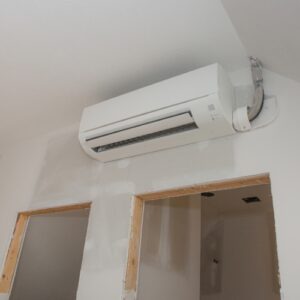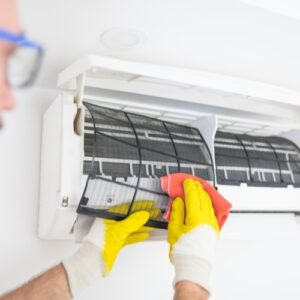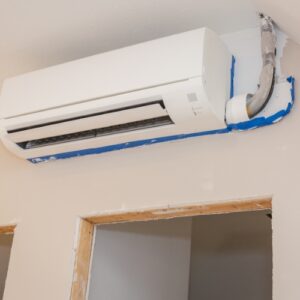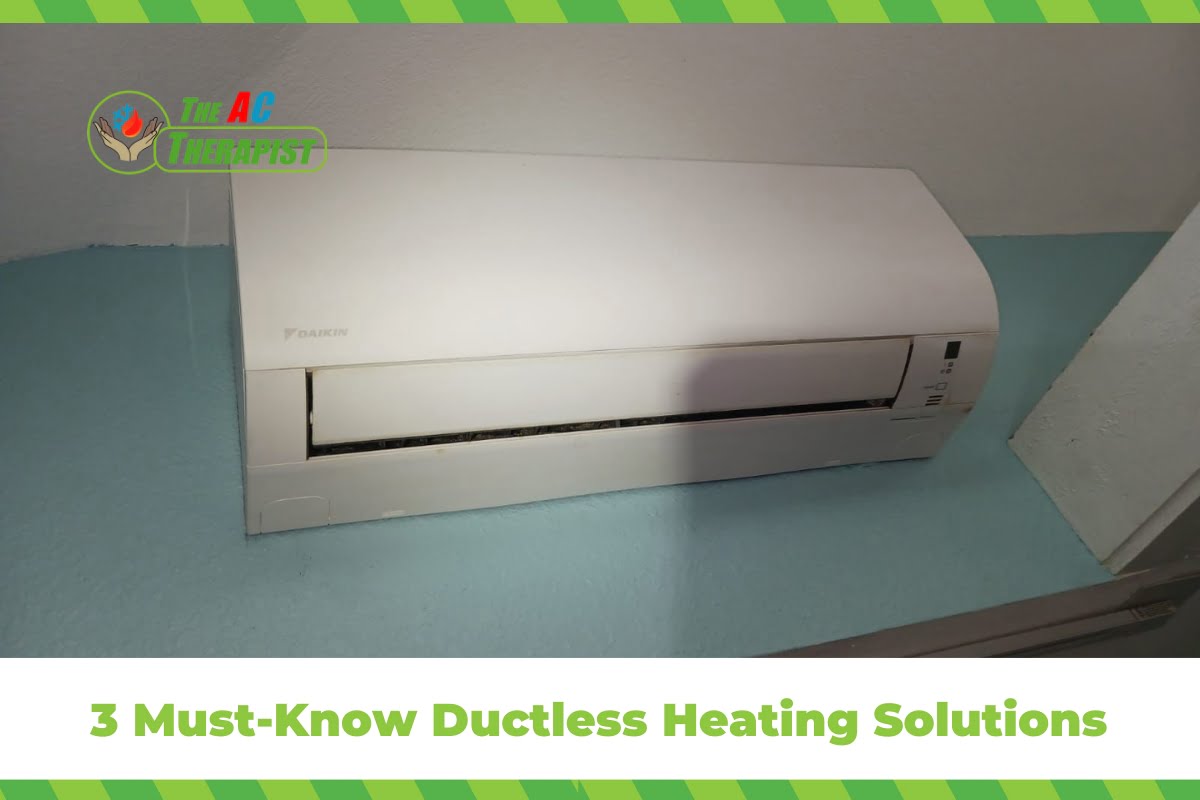3 Must-Know Ductless Heating Solutions
A functioning ductless heating system becomes more than a comfort—it’s a necessity. Ductless heating systems, also known as mini-split systems, offer efficient and targeted heating solutions for homes and light commercial spaces. However, like any mechanical system, they can encounter issues. This comprehensive guide will walk you through troubleshooting your ductless heating system, ensuring warmth and comfort all season long.
Understanding ductless heating systems, also known as mini-split systems, is crucial for homeowners and light commercial property owners seeking efficient and flexible heating solutions. Unlike traditional central heating systems that rely on ducts to distribute warmth throughout a building, ductless systems provide direct heating (and cooling) to specific areas or zones. This section will delve into the components, operation, and benefits of ductless heating systems, offering a foundational understanding of how these systems work and why they might be the right choice for your heating needs.
Components of Ductless Heating Systems
A typical ductless heating system consists of two main components:
- Outdoor Unit: This contains the compressor and condenser. It’s installed outside the building and is responsible for expelling heat from the indoor space during cooling operations and drawing in heat from the outdoor air during heating operations (in the case of heat pump models).
- Indoor Unit(s): Also known as air handlers, these units are mounted inside the building, often on walls or ceilings. Each indoor unit is connected to the outdoor unit via a small conduit that houses the power cable, refrigerant tubing, and a condensate drain line. These units deliver heated or cooled air directly into the space where they are installed.

How Ductless Heating Systems Operate
Ductless heating systems can operate in various modes, but during the heating season, they function by extracting heat from the outdoor air and transferring it indoors—a process facilitated by the refrigerant circulating between the outdoor and indoor units. Here’s a simplified overview of the heating operation:
- Heat Absorption: The outdoor unit’s compressor pumps refrigerant through the system. As the refrigerant passes through the outdoor unit’s coil, it absorbs heat from the outside air.
- Heat Transfer: The now-warm refrigerant is then circulated to the indoor unit(s), where it flows through coils.
- Heat Distribution: As indoor air passes over the warm coils in the indoor unit, heat is transferred from the coils to the air, which is then distributed into the room.
This process is highly efficient, especially in models designed as heat pumps, which can provide both heating and cooling. In colder climates, some ductless systems are equipped with supplemental heating elements to ensure adequate warmth when outdoor temperatures are extremely low.
Benefits of Ductless Heating Systems
Ductless heating systems offer several advantages over traditional heating methods:
- Energy Efficiency: By eliminating the need for ductwork, ductless systems reduce energy loss associated with ducted systems, leading to lower heating costs.
- Flexibility: Each indoor unit can be controlled independently, allowing for personalized temperature settings in different zones or rooms, enhancing comfort and further reducing energy consumption.
- Easy Installation: Ductless systems require only a small hole to be drilled into the wall for the conduit, making them less invasive and easier to install than ducted systems.
- Improved Air Quality: With no ductwork to collect dust, allergens, and other air pollutants, ductless systems can improve indoor air quality. Regular cleaning and maintenance of the filters in the indoor units also contribute to cleaner air.
1. System Not Heating Adequately
When your ductless heating system isn’t heating adequately, it can be a source of discomfort and frustration, especially during colder months. This issue can stem from various causes, ranging from simple fixes to more complex problems requiring professional intervention. Below, we explore common reasons behind inadequate heating from a ductless system and provide practical solutions to address these issues.
1. Dirty or Clogged Air Filters
Problem: One of the most common reasons for a ductless system not heating adequately is a dirty or clogged air filter. Over time, filters can accumulate dust, pet hair, and other debris, restricting airflow and reducing the system’s ability to heat effectively.
Solution: Regularly check and clean the air filters in your indoor units. Most ductless systems have easily accessible filters that can be vacuumed or washed with water. It’s recommended to clean or check filters every month during peak usage periods.
2. Low Refrigerant Levels
Problem: Refrigerant is the lifeblood of your ductless heating system, facilitating the transfer of heat between the indoor and outdoor units. Low refrigerant levels, often due to leaks, can significantly impair the system’s heating capacity.
Solution: Inspect your system for signs of refrigerant leaks, such as ice buildup on the refrigerant lines or hissing noises from the units. Because handling refrigerant requires special training and certification, it’s crucial to contact a professional HVAC technician to repair leaks and recharge the system.
3. Incorrect Thermostat Settings
Problem: Sometimes, the issue is as simple as incorrect settings on your thermostat or remote control. Setting the temperature too low or having the system in the wrong mode can prevent adequate heating.
Solution: Double-check the settings on your thermostat or remote control. Ensure the system is set to heating mode and that the desired temperature is higher than the current room temperature. Also, consider the placement of your remote sensors; they should be away from drafts, direct sunlight, or other heat sources that could misrepresent the room’s actual temperature.
4. Blocked or Poorly Positioned Indoor Units
Problem: The location and positioning of your indoor units play a crucial role in effective heating. Units blocked by furniture, curtains, or other obstacles can’t circulate warm air properly. Similarly, units positioned too high or too far from the living areas may not distribute heat efficiently.
Solution: Ensure that nothing is obstructing the airflow from your indoor units. Consider the unit’s placement and whether it’s optimally positioned to heat the intended space. Sometimes, repositioning furniture or slightly adjusting the unit’s angle can improve heating performance.
5. Outdoor Unit Issues
Problem: The outdoor unit is essential for the heating process, and issues such as blockages, dirt buildup, or mechanical failures can impact the system’s ability to heat.
Solution: Regularly inspect the outdoor unit, ensuring it’s free from leaves, snow, ice, or other debris that could block airflow. Keep the area around the unit clear and consider professional cleaning to remove dirt and grime from the coils.
6. System Needs Professional Maintenance
Problem: Like any complex mechanical system, ductless heating systems require regular maintenance to operate efficiently. Lack of professional servicing can lead to various issues, including inadequate heating.
Solution: Schedule annual or semi-annual maintenance visits from a qualified HVAC technician. These visits can include cleaning components that are difficult to access, checking refrigerant levels, and ensuring all parts are in good working order.

2. System Not Turning On
When your ductless heating system refuses to turn on, it can be a cause for concern, especially during extreme weather conditions. This issue can stem from a variety of causes, ranging from simple fixes to more complex electrical problems. Below, we explore common reasons why a ductless system might not turn on and provide practical solutions to help you address these issues.
1. Power Supply Issues
Problem: A very common reason for a ductless system not turning on is an issue with the power supply. This could be due to a tripped circuit breaker, a blown fuse, or a disconnected power cord.
Solution: Check your home’s electrical panel for any tripped circuit breakers or blown fuses. Reset the breaker or replace the fuse if necessary. Also, ensure that the power cord for both the indoor and outdoor units is securely plugged in and that there is no damage to the cord.
2. Faulty Remote Control
Problem: Sometimes, the issue might be as simple as a problem with the remote control. Dead batteries, incorrect settings, or a malfunctioning remote can all prevent the system from turning on.
Solution: Replace the batteries in your remote control and ensure it is set to the correct mode. If the system still doesn’t respond, try manually turning it on using the button on the indoor unit, if available. This can help determine if the issue lies with the remote.
3. Thermostat Issues
Problem: If your ductless system is connected to a smart thermostat or a traditional thermostat, incorrect settings or a malfunctioning thermostat can prevent the system from turning on.
Solution: Verify that the thermostat is set to “heat” mode and that the set temperature is higher than the current room temperature. If you suspect the thermostat is malfunctioning, you may need to reset it or consult with a professional for repair or replacement.
4. Safety Switches Tripped
Problem: Ductless systems are equipped with safety switches that automatically shut off the system to prevent damage under certain conditions, such as an overflow in the condensate drain pan.
Solution: Check for any visible signs of issues that could trigger the safety switch, such as water in the condensate drain pan. Clear any blockages in the drain line and reset any tripped switches. If you’re unsure how to do this, it’s best to call a professional.
5. Internal Component Failure
Problem: More complex issues, such as a failed compressor, defective control board, or other internal component failures, can also prevent the system from turning on.
Solution: Diagnosing and repairing internal component failures typically require the expertise of a professional HVAC technician. They can perform a detailed inspection to identify the faulty component and replace it.
3. Strange Noises or Odors
When your ductless heating system starts making strange noises or emitting unusual odors, it can be unsettling and may indicate underlying issues that need attention. These symptoms can range from minor concerns that are easily fixed to more serious problems requiring professional intervention. Understanding the common causes of these noises and odors can help you troubleshoot and resolve the issue effectively.
Strange Noises
1. Hissing or Bubbling Sounds
- Problem: These sounds often indicate a refrigerant leak. Refrigerant is crucial for the heating process, and a leak can significantly reduce efficiency and performance.
- Solution: Refrigerant leaks require professional repair. A certified technician can locate the leak, repair it, and recharge the system with refrigerant.
2. Buzzing or Electrical Noises
- Problem: Buzzing sounds can be related to electrical issues, such as loose wiring or malfunctioning components within the indoor or outdoor units.
- Solution: Due to the risk of electric shock, it’s best to turn off the system and contact a professional to inspect and repair any electrical problems.
3. Grinding or Squealing Noises
- Problem: These noises may come from the fan or motor bearings, indicating wear or lack of lubrication.
- Solution: Lubricating the fan motor or replacing worn bearings can resolve these noises. This task is typically performed by a professional during regular maintenance.
Unusual Odors
1. Musty or Moldy Smells
- Problem: A musty odor often suggests the presence of mold or mildew within the system, possibly in the drain pan, on the coils, or within the ductless unit itself.
- Solution: Cleaning the affected areas can eliminate the odor. Regular maintenance, including cleaning the drain pan and ensuring proper drainage, can prevent mold and mildew growth.
2. Burning Smells
- Problem: A burning odor may indicate an electrical issue, such as overheating components or wiring problems.
- Solution: Turn off the system immediately to prevent potential fire hazards and contact a professional. Electrical components should be inspected and repaired or replaced as necessary.
3. Rotten Egg Smell
- Problem: While less common in ductless systems, a sulfur-like or rotten egg smell could indicate a gas leak, especially in systems that use natural gas for heating.
- Solution: If you suspect a gas leak, evacuate the area immediately and contact your gas company or a professional to address the issue safely.
Preventative Measures
To prevent strange noises and odors from developing in your ductless heating system:
- Regular Maintenance: Schedule annual or semi-annual maintenance checks with a professional to keep your system clean and in good working order.
- Clean Filters Regularly: Check and clean or replace the air filters in your indoor units regularly to prevent airflow restrictions and buildup of dust and debris.
- Inspect and Clean Outdoor Units: Ensure the outdoor unit is clear of debris, snow, or ice that could obstruct airflow or cause damage.
Strange noises and odors from your ductless heating system should not be ignored, as they can indicate issues that may affect the system’s efficiency, performance, and safety. By understanding the common causes and solutions for these symptoms, you can take proactive steps to address them. When in doubt, or if the problem persists, seeking professional assistance is the best course of action to ensure your system operates safely and effectively.

Stay Warm and Worry-Free: Expert Tips for Troubleshooting Your Ductless Heating System
Troubleshooting your ductless heating system can seem like a daunting task, but with the right approach and a bit of guidance, it doesn’t have to be. As your trusted AC Therapist, we’re here to demystify the process, providing you with expert tips and practical solutions for the most common issues you might face. Whether your system is struggling to heat adequately, refusing to turn on, making strange noises, or emitting unusual odors, understanding how to address these problems can make all the difference in maintaining a comfortable and inviting space year-round.
The foundation of a well-functioning ductless heating system lies in regular maintenance. By keeping an eye on the condition of your air filters, ensuring the outdoor unit is free from obstructions, and monitoring your system for any signs of wear or unusual behavior, you can prevent many issues from escalating. However, some challenges require more than preventative measures—they need timely and effective action. From diagnosing inadequate heating to pinpointing the cause of disruptive noises, taking swift steps to resolve these issues can enhance your system’s performance and longevity.
Yet, there are times when the complexities of your ductless heating system surpass the realm of DIY fixes. In such instances, the expertise of a professional becomes invaluable. This is where our team at The AC Therapist shines. Equipped with the knowledge, tools, and experience necessary to tackle any challenge, we ensure that your ductless heating system receives the care it deserves. Whether you’re in need of a thorough inspection, or urgent repairs, or are considering an upgrade to a more advanced model, our commitment to excellence guarantees your satisfaction.
Our services extend beyond repairs and maintenance. We’re dedicated to optimizing your system’s efficiency and comfort through innovative solutions, such as smart thermostat integration for precise temperature control and customized maintenance plans tailored to your specific needs. Our Therapy Maintenance Plans, designed with your peace of mind in mind, offer a range of benefits, including scheduled maintenance visits and exclusive discounts on services, ensuring your system’s optimal performance at all times.
In closing, navigating the challenges of troubleshooting your ductless heating system can be a smooth and manageable process with the right support. At The AC Therapist, we’re more than just service providers—we’re your partners in creating a comfortable and welcoming environment, regardless of the season. So, when you encounter any issues with your ductless heating system, remember that you’re not alone. Reach out to us, and let’s work together to keep your space warm, efficient, and worry-free. With our expertise and your proactive approach, there’s no challenge we can’t overcome together.








